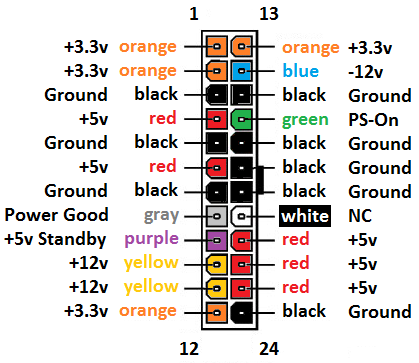I just thought of an idea for my build and it’s kept me up all night just thinking about it. I was wondering if it would be safe to run two motherboards to run off 1 power supply given the wattage is sufficient to power both?. Im no electrical engineer so I’m not sure that I’ve considered all the possible hazards. I know there are solutions by phanteks that do this but they have a reputation for being unreliable or even dangerous due to the way it’s accomplished. Obviously I’d only be giving 1 motherboard access to the psu-on pin. Also are there any logic related pins on the 24 pin plug that I would need to be aware of (like sense or something)?
To the best of my knowledge you can do this as long as the PSU meets the power requirements of the hardware. One thing to be aware of is that you’ll need a good quality PSU as it could trigger the Overvoltage protections circuit if both systems draw max power at the same time. I’m not aware of any technologies on PSU’s that would actively detect the number of devices plugged in.
Note if you decide to make a custom solution I would make sure to thoroughly research what you are doing and possibly consult with an EE(be prepared to pay a lot of money)
Here is a 24pin diagram:

technically it does work. though ‘PS-ON’ will be out of spec.
if you were to only turn on 1 system, the fans and most accessory power systems on the turned off system will be energized. this is probably fine, probably.
I did this back in the day with a couple of old computers for Fold@Home. I took the 20 pin cable (Pre-24 pin days) from one old PSU and spliced it to another.
I’m not just trying to be pedantic here, but it’s overCURRENT protection. Current draw can be critical even when wired properly. Because of the heavy reliance on current from the 12 volt rail(s), you could be well under the ‘stated’ total maximum but draw too much current from a single rail. Either OCP kicks in and things are safe but nonfunctional, or it doesn’t and the angry pixies make magic smoke. Also be careful if the PSU has multiple 12V rails.
Some power supplies also have specific maximum current output for combined rails, maybe 3.3v + 5v = 200W max even though they individually add up to say 280W. On top of all of that you would actually have to know how much current each system can draw under various workloads instead of the ubiquitous ‘This draws about X watts and that draws about Y watts’ stuff you commonly see on enthusiast forums. That almost always works because people almost always leave plenty of overhead. Most people are afraid of electricity, as well they should be. I’m gonna guess the vast majority of failures of this type of project aren’t seen much on the internet, let alone worked through logically with concrete numbers until it is resolved by problem solving instead of shooting it with the parts cannon.
I know a lot of people hate on OEM PSU, but if they were really that egregious the OEM’s would either have to constantly pay out to replace PSU’s or make the PSU’s sufficiently robust. It’s a self correcting problem. You can find people on ebay and elsewhere selling used PSU’s in lots for dirt cheap. This is likely the cheapest and easiest solution to not having enough power supplies. It’s hard to give more specific help without knowing anything about the hardware or your goals.
I wouldn’t cheap out on a psu here as it needs to do the work for two systems. I could alleviate some of the problems that could be caused by non 12v periferals by using a stepdown converter if they draw over the psus 5 and 3.3v rated limit. Which that begs the question, what would be a good way to measure the 5/3.3v power draw.
Phanteks had an PSU splitter assembly plate, that was taken off shelves rather quickly
… I think thas the device, you were thinking of
Phanteks still hosts their 2x mainboard-friendly PSUs [1000W / 1200W variants]
Pricing is a bit heavy, but mind you- it is a small markup, compared to similar wattage PSUs
I still keep getting tempted, to do such a 2n1 build
IMO a oem psu from someone like dell, hp. or lenovo is better than cheap aftermarket options. Provided you aren’t overloading them. There’s not really much headroom. I think they must have a bad rep from people trying to upgrade oem pc’s with high power gpu’s.
This topic was automatically closed 273 days after the last reply. New replies are no longer allowed.